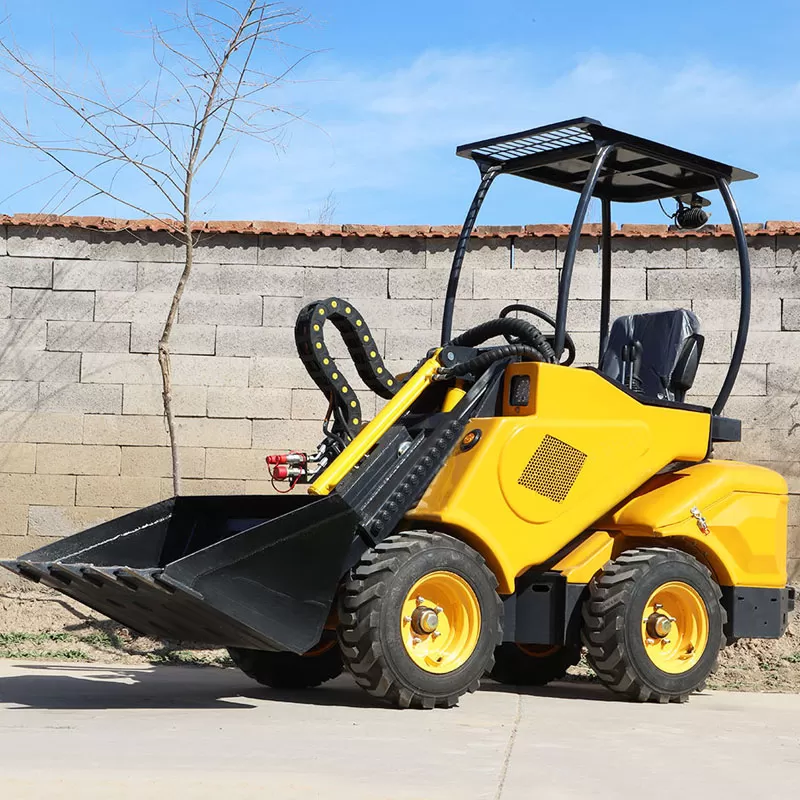In industrial and mining environments, loaders are essential construction machinery, widely used in mines, coal mines, construction sites, sand and gravel plants, and other locations. Industrial and mining environments place stringent demands on the adaptability, efficiency, and versatility of loading equipment. Depending on the workload, loaders vary in type and performance. Sugarcane loaders and telescopic loaders are two typical examples, each with its own unique advantages and applications. This article will provide a detailed analysis of the applications of these two types of loaders in industrial and mining environments.

Sugarcane loaders are primarily used for harvesting, handling, and stacking sugarcane. Due to their efficient operation and adaptability, these loaders are widely used in agriculture and mining operations. Their design and features enable efficient and stable operation in specific environments.
Advantages:
1.1 High Load Capacity
Sugarcane loaders are typically designed to handle large loads, making them suitable for handling heavy minerals and bulky materials. Its powerful gripping capacity and stability make it an excellent performer in heavy-load operations in the mining and industrial sectors.
1.2 Adaptability to Complex Terrain
The sugarcane loader's drive and suspension system design enables stable operation in rugged mining environments, especially in slippery, muddy, or mountainous terrain, providing excellent maneuverability.
1.3 Efficient Operation
Thanks to its efficient working mechanism and power system, the sugarcane loader can quickly perform various operations such as stacking and transporting, improving work efficiency in mines and construction sites.
1.4 Precision Operation
During material handling, the sugarcane loader's precise control and stability effectively improve work accuracy, reduce environmental disturbances, and enhance work safety.
A telescopic loader is a type of construction machinery with a telescopic boom. Its most notable feature is its adjustable arm length, enabling it to operate over a wider range. This type of loader is particularly suitable for complex mining and industrial environments that require height adjustment and the ability to navigate obstacles.
Advantages:
2.1 Adjustable Arm Length, Wide Operating Range
The telescopic arm design enables these loaders to operate over long distances within confined spaces, making them particularly suitable for high-altitude material handling, such as stockpiling in mines and loading coal. This feature makes them highly advantageous in the mining industry, especially in challenging work scenarios.
2.2 High Flexibility and Wide Applicability
The adjustability of telescopic loaders allows them to operate flexibly in confined spaces, making them suitable for a variety of cramped and crowded work environments. Their versatility allows them to quickly adapt to diverse work requirements, such as excavation, handling, and stacking.
2.3 Improved Safety
During high-altitude operations, telescopic arms effectively keep the operator out of danger, reducing the risk of accidents. Furthermore, telescopic loaders are typically equipped with more sophisticated control systems and stabilization devices, ensuring a higher level of safety during operation.
2.4 High Efficiency and Energy Saving
Telescopic loaders offer significant advantages in optimizing operational processes. Through the efficient coordination of their telescopic boom and powertrain, they reduce unnecessary energy consumption, thereby improving operational efficiency and reducing energy consumption.
|
Scenario |
Sugarcane loader applicability |
Telescopic loader suitability |
|
Ore yard transshipment |
Suitable for fast loading of regular bulk materials |
More suitable for high-position stacking and obstacle-crossing operations |
|
Narrow alley operations |
The rotating snatch mechanism takes up little space (only 2.15m wide) |
The radial space requirement for the telescopic arm to be expanded needs to be considered |
|
Multi-process complex operation |
Large limitations |
Excavation-loading-crushing linkage can be achieved by switching attachments |
Both sugarcane loaders and telescopic loaders have their unique advantages and applicable scenarios. Sugarcane loaders, used in the mining and industrial sectors, primarily focus on heavy loads, efficient operation, and adaptability to complex terrain. They are suitable for long-duration, heavy-load operations in mines and large construction sites. Telescopic loaders, on the other hand, excel in environments requiring high flexibility, precision, and obstacle-crossing, making them particularly well-suited for operations at height and in confined spaces.
The two types of equipment complement each other in the mining and industrial sectors: sugarcane loaders are irreplaceable in specialized material handling applications, while telescopic loaders, with their adaptability and expandable functionality, are the preferred choice for complex work environments. With the advancement of modular design, the technical boundaries between the two types may further converge.
Overall, choosing the right loader type requires customization based on the specific needs of the mining environment. As the mining industry continues to demand higher efficiency and safety from equipment, sugarcane loaders and telescopic loaders undoubtedly play a vital role in the industry.
If you have any questions about the use of sugarcane loaders and telescopic loaders in mining environments, or if you're interested in purchasing loaders and accessories, please contact us.